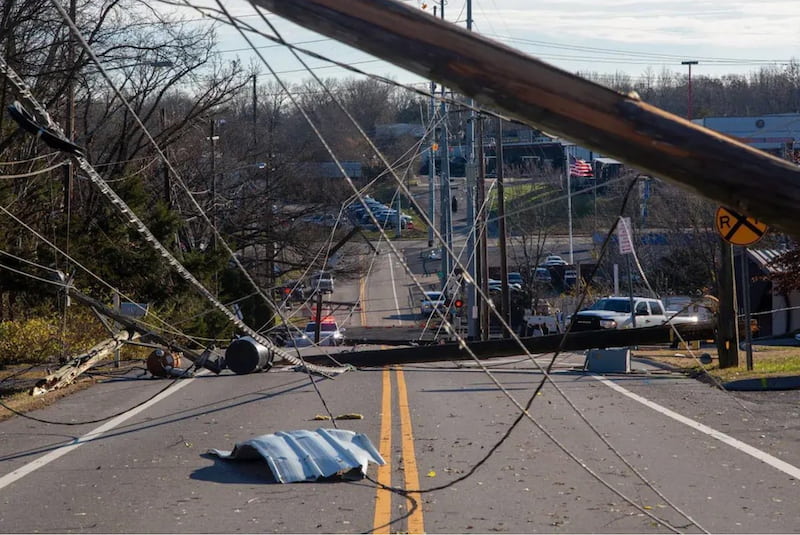Last week, Cuba lost all Internet connectivity when Hurricane Rafael struck the nation and caused a failure in its power infrastructure. This was only a few weeks after the shutdown of a major power generation plant caused a nationwide power outage and a loss of all Internet connectivity. In late October, the Caribbean island of Guadalupe dropped off the Internet as striking workers took over and shut down the island’s main power plant.
In the last three months, Ecuador, Kenya, Senegal, and Venezuela have all experienced nationwide power outages related to infrastructure, all of which have disrupted most or all Internet connectivity within the country. Meanwhile, extreme weather in the form of massive flooding or large hurricanes has disconnected power and Internet connectivity for people in Cameroon, Chad, Nepal, Spain, and parts of the southeastern US. Across parts of the Middle East, military conflicts have also left many people without power… and without Internet.
The reality is that without electrical power, the Internet we all rely on will not work.
Internet Resilience Depends Upon Electrical Resilience
We continuously measure and compare the resilience of Internet connectivity in countries using our Pulse Internet Resilience Index and consistently publish articles about resilience on the Pulse blog.
Through all of that work, we’ve seen this common theme emerge around the need for resilience of power/energy/electrical infrastructure. In September, my colleague Robbie Mitchell published an article on the Pulse blog where he stated:
We recognize that power is one of, if not the most vital component of the Internet. If there is no electricity to power routers, switches, receivers, and data centers, then there is no Internet. As such, decision-makers must consider its resilience in any Internet resilience-related policies and projects.”
He went on to compare the Pulse Internet Resilience Index score to the World Bank’s Access to Electricity (% of population) metric for 170 countries in a series of interactive charts. Perhaps to no surprise, there is a strong correlation between Internet access and access to reliable electricity.
How We Can Make an Impact on Internet Resilience through Electrical Resilience
In our 2030 Strategy, one of our Strategic Goals is for people everywhere to have access to affordable, reliable, and resilient Internet.
To get there, I see three potential steps that the Internet Society and Internet community can take:
1. Consider electrical resilience in Internet infrastructure deployments and policies.
Recently, communities in Nepal suffered flooding from a glacial lake outburst flood or “glof.” We’ve worked with deploying a community network in the region, and we received an update after the flooding:
Note that they were able to keep their connectivity on because they had solar-powered battery backups that powered the routers and the user devices. Similarly, our Internet Society Kyrgyzstan Chapter used solar panels to power Internet connectivity in the village of Zardaly, because there was no other option for electricity.
We’re seeing that around the world, there is an increasing deployment of local solar panels (often more than governments are aware of), and this kind of local electrical resilience is critical. There is a whole area of “distributed generation” or “distributed energy resources (DER)” where there is significant development. We need to understand more of what is happening here and what options may be available for community-centered connectivity and the broader electrical grid.
On the policy front, as Robbie wrote, “Decision-makers must consider (energy) resilience in any Internet resilience-related policies and projects.”
2. We need to find good data sources for electrical resilience.
As Robbie wrote in his post, we want to add electrical resilience metrics to Pulse. But we need to find global, up-to-date, open-source data that we can use.
There are widely used metrics within the power industry, such as SAIDI and SAIFI, but we have yet to find reliable sources for global metrics. If anyone reading this is aware of data we should consider, please let me know.
3. We need to be engaging with the power/energy industry.
There’s a missing link here. When I look at Internet-related events, even those around Internet resilience, they generally don’t seem to include people from the power/energy industry.
While doing some web searching, I saw many events related to energy resilience. The power industry has been concerned about resilience for most of its existence, so this is an area where they have deep experience and interest. But, from glancing at the event agendas, they generally don’t seem to include people from the Internet industry. Some I found have cybersecurity sessions, but these seem to be about the security of energy systems and the electrical grid.
We need to talk to each other. We need to attend each other’s events and work together when it makes sense.
I don’t have an answer to this right now. It’s far bigger than our work at the Internet Society—it’s across the entire Internet technology industry.
If there are places where these conversations are already happening, please drop me a note. And if these conversations are not happening, let’s figure out how to get them started over the years ahead. If you are hosting a session or event around Internet resilience, consider if people working on energy resilience can be included. If you are looking for articles to write or research to undertake, consider this as a topic area. And let’s build connections with our peers in the power/energy industry.

